|
Navigation
Introduction
Easterbrook Name
Devon
West Country (excl.Devon)
South East England
Rest of British Isles
Europe
Africa
Americas
Canada
USA
Australia and New Zealand
Asia
Other Surnames
Ancestor Trees
Resources
Monumental Inscriptions
Life Event Registration
Census Transcriptions
Document Transcriptions
Credits

|
|
Remembrance Days


Remembrance Day 2020
It is the policy of this site to pick one individual to represent all those who lost their lives to conflict
Thomas Henry Esterbrook, Stoker 1st Class, HMS "Queen Mary". Born 1 Mar 1894. Killed in Action 31 May 1916.

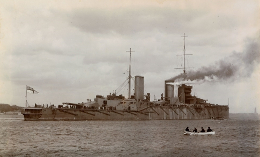 Thomas was born in Islington, London, son of John Charles Esterbrook and Ellen M Edgar. He was one of 10 children brought up in Islington, but by 1911 he had left London for the coal mines of South Wales as a coal miner hewer. On the 9th July 1912 he signed up for 12 years service in the Royal Navy and served on Vivid II, New Zealand, and on the 3rd July 1914 on HMS Queen Mary just prior to the outbreak of war. The Queen Mary saw her first engagement of the war during the Battle of Heligoland Bight on 28 August 1914 as part of the battlecruiser force under the command of Rear Admiral David Beatty. On 31st May 1916 Queen Mary put to sea with the rest of the Battlecruiser Fleet to intercept a sortie by the High Seas Fleet into the North Sea. It intercepted the German fleet and entered the most bloody of naval battles, the Battle of Jutland. In the late afternoon she was hit multiple times by enemy fire, which ignited the ship's ammunition causing a number of explosions on board. A further explosion, possibly from shells breaking loose, shook the aft end of the ship as it began to roll over and sink. Tiger, the battlecruiser behind her, was showered with debris from the explosion and forced to steer to port to avoid her remains. As a stoker, Thomas would have had no chance of escape. 1,266 crewmen were lost; eighteen survivors were picked up by the destroyers Laurel, Petard, and Tipperary, and two by the Germans.
Thomas was born in Islington, London, son of John Charles Esterbrook and Ellen M Edgar. He was one of 10 children brought up in Islington, but by 1911 he had left London for the coal mines of South Wales as a coal miner hewer. On the 9th July 1912 he signed up for 12 years service in the Royal Navy and served on Vivid II, New Zealand, and on the 3rd July 1914 on HMS Queen Mary just prior to the outbreak of war. The Queen Mary saw her first engagement of the war during the Battle of Heligoland Bight on 28 August 1914 as part of the battlecruiser force under the command of Rear Admiral David Beatty. On 31st May 1916 Queen Mary put to sea with the rest of the Battlecruiser Fleet to intercept a sortie by the High Seas Fleet into the North Sea. It intercepted the German fleet and entered the most bloody of naval battles, the Battle of Jutland. In the late afternoon she was hit multiple times by enemy fire, which ignited the ship's ammunition causing a number of explosions on board. A further explosion, possibly from shells breaking loose, shook the aft end of the ship as it began to roll over and sink. Tiger, the battlecruiser behind her, was showered with debris from the explosion and forced to steer to port to avoid her remains. As a stoker, Thomas would have had no chance of escape. 1,266 crewmen were lost; eighteen survivors were picked up by the destroyers Laurel, Petard, and Tipperary, and two by the Germans.
Thomas is honoured on the Portsmouth Naval Memorial in Southsea. • Explore Thomas's Family. • Find out about those who share our surname who also lost their lives in the Great War and World War II.
|


Remembrance Day 2021
It is the policy of this site to pick one individual to represent all those who lost their lives to conflict
Florence Maggie Louise Easterbrook, Auxilary Territorial Service, killed 28th July 1944 age 25
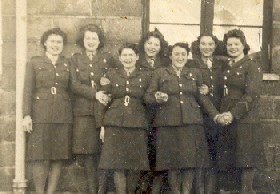
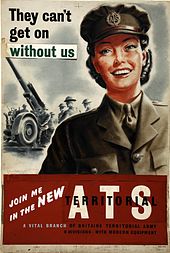 Florence was the daughter of Stephen George Wilson Lyndon and Maggie Lyndon, and wife of W.S.Easterbrook of Wembury, Devon. Florence was unfortunately killed in action just one month after their wedding and was buried in St Werburgh's Churchyard. Her grave is maintained by the Commonwealth Commission for War graves. Although church records show that William was buried in C14 with his wife, Florence, there is no mention of it on the inscription.
Florence was the daughter of Stephen George Wilson Lyndon and Maggie Lyndon, and wife of W.S.Easterbrook of Wembury, Devon. Florence was unfortunately killed in action just one month after their wedding and was buried in St Werburgh's Churchyard. Her grave is maintained by the Commonwealth Commission for War graves. Although church records show that William was buried in C14 with his wife, Florence, there is no mention of it on the inscription.
I do not have a picture of Florence but the image of WTS women illustrates the unit in which she would have served. Further information about the ATS can be found on Wikipedia.
|


Remembrance Day 2022
As war again rages on the European continent, we remember some of the many civilian casualties of war.
Harry Easterbrook, his wife Kate (neé Moody), and their daugter Anne
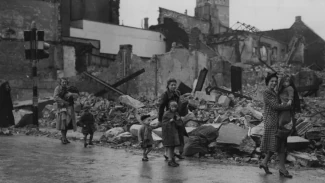
 Harry was the 5th child and second youngest of Charles and Olive Moore, born in 1907 and would have lived his childhood years under the shadow of the Great War. Kate is the daughter of Jeffery and Emily Moody also of Plymouth born in 1917 in the closing months of the Great War. Harry and Kate married in the first months of 1937 and their first child, Anne was born on the 12th May 1941 during the blitz bombing of Plymouth. On the 16th May they were at the Hook, Hay Road when it took a direct hit from a german bomb. Harry, Kate, and their four day old daughter Anne were killed.
Harry was the 5th child and second youngest of Charles and Olive Moore, born in 1907 and would have lived his childhood years under the shadow of the Great War. Kate is the daughter of Jeffery and Emily Moody also of Plymouth born in 1917 in the closing months of the Great War. Harry and Kate married in the first months of 1937 and their first child, Anne was born on the 12th May 1941 during the blitz bombing of Plymouth. On the 16th May they were at the Hook, Hay Road when it took a direct hit from a german bomb. Harry, Kate, and their four day old daughter Anne were killed.
On the right is the memorial that commemorates the 1,174 civilians who lost their lives during the Second World War air attacks on Plymouth. The worst of these attacks took place over 7 nights through March and April 1941 and became known as the Plymouth Blitz. The memorial within Efford cemetery is the only memorial within the city to be dedicated to the civilian dead and within 10 metres of the war memorial is a mass grave for those victims.
On the left is an example of the destruction to civilian houses.
|


Remembrance Day 2023
It is the policy of this site to pick one individual to represent all those who lost their lives to conflict
Flying Officer Sidney Dalton Easterbrook (411302) of the Royal Australian Air Force, son of Joseph Phillip and Florence Mary Easterbrook; husband of Joan Daphne Easterbrook, of Chatswood, New South Wales, Australia

 This is a reminder that not all deaths in action are caused by enemy action, sometimes they are just tragic accidents. On Sunday 19th November 1944 86 Squadron "Liberator" BZ943 took off from Coastal Command Leigh captained by Flt Lt GG Gates, RAF. While carrying out a homing exercise crashed at sea just before midnight and caught fire. On board were 10 airmen including Flying Officer Sidney Dalton Easterbrook. The bodies of one of the RAF crew Pilot Officer John Arthur and of RAAF FO Easterbrook were recovered. Sidney is buried at Bellie Burial Ground, Moray, Scotland and John Arthur in Liverpool Anfield Cemetery. The remainder of the crew are commemorated on the Runnymede Memorial in Surrey. No. 86 Squadron was a unit of the Royal Air Force. Attached to Coastal Command the unit flew reconnaissance and air-sea rescue missions, anti-shipping strikes, and anti-submarine patrols. 86 Squadron was a successful anti-submarine unit, accounting for fourteen U-boats destroyed.
This is a reminder that not all deaths in action are caused by enemy action, sometimes they are just tragic accidents. On Sunday 19th November 1944 86 Squadron "Liberator" BZ943 took off from Coastal Command Leigh captained by Flt Lt GG Gates, RAF. While carrying out a homing exercise crashed at sea just before midnight and caught fire. On board were 10 airmen including Flying Officer Sidney Dalton Easterbrook. The bodies of one of the RAF crew Pilot Officer John Arthur and of RAAF FO Easterbrook were recovered. Sidney is buried at Bellie Burial Ground, Moray, Scotland and John Arthur in Liverpool Anfield Cemetery. The remainder of the crew are commemorated on the Runnymede Memorial in Surrey. No. 86 Squadron was a unit of the Royal Air Force. Attached to Coastal Command the unit flew reconnaissance and air-sea rescue missions, anti-shipping strikes, and anti-submarine patrols. 86 Squadron was a successful anti-submarine unit, accounting for fourteen U-boats destroyed.
On the left is the Liberator aircraft. On the right some unidentified airmen of Coastal Command.
|


Remembrance Day 2024
It is the policy of this site to pick one individual to represent all those who lost their lives to conflict. This year I have chosen from the US military.
Ensign Richard Warren Easterbrook 0378899 of the US Naval Reserve from Dudley, Worcester County, Massachusetts
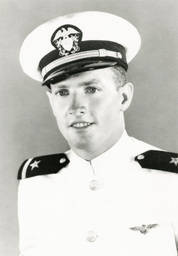
 Richard W Easterbrook was married to Susanne Easterbrook from Troy, Rensselaer county, New York. He had family in the area of Worcester county, Massachusetts. He was serving in the US Naval Reserve as an Ensign on USS Bismarck Sea when was attacked by a Japanese kamikaze which crashed through the hangar deck and struck the ship's magazines. Two minutes later a second plane, likely attracted by the ship's glow against the darkness, approaching from the port side, struck the aft elevator shaft, exploding on impact, killing the majority of the fire-fighting party and destroying the fire fighting salt-water distribution system, thus preventing any further damage control. The ship sank with the loss of 318 men off Iwo Jima , and was the last US Navy aircraft carrier to be lost during World War II. He was recorded Missing in action or lost at sea.
Richard W Easterbrook was married to Susanne Easterbrook from Troy, Rensselaer county, New York. He had family in the area of Worcester county, Massachusetts. He was serving in the US Naval Reserve as an Ensign on USS Bismarck Sea when was attacked by a Japanese kamikaze which crashed through the hangar deck and struck the ship's magazines. Two minutes later a second plane, likely attracted by the ship's glow against the darkness, approaching from the port side, struck the aft elevator shaft, exploding on impact, killing the majority of the fire-fighting party and destroying the fire fighting salt-water distribution system, thus preventing any further damage control. The ship sank with the loss of 318 men off Iwo Jima , and was the last US Navy aircraft carrier to be lost during World War II. He was recorded Missing in action or lost at sea.
Pictured is Richard from Navy archives and the USS Bismark Sea pictured in June 1944.
|


Remembrance Day 2025
It is the policy of this site to pick one individual to represent all those who lost their lives to conflict.
Bernard Thomas William Leighton, Royal Army Medical Corps.
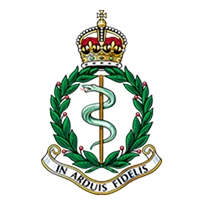
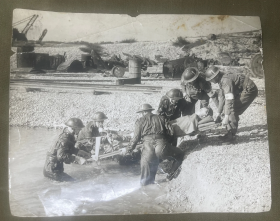 In this 80th anniversary year of VE day and VJ day, we reflect that peace did not end the death toll and many still lost their lives due to injury or accident long after the fighting stopped. We also remember those who dealt with the effects of conflict, often under extreme and difficult conditions, the medics.
In this 80th anniversary year of VE day and VJ day, we reflect that peace did not end the death toll and many still lost their lives due to injury or accident long after the fighting stopped. We also remember those who dealt with the effects of conflict, often under extreme and difficult conditions, the medics.
Bernard Thomas William Leighton was born in Birmingham in 1907 to Horace and Eliza Leighton the fourth of 9 children. At the beginning of the war he is a civilian stretcher bearer but later joins the Royal Army Medical Corps. He is killed in an accident on 29th December 1945 in Belgium.
To the left is the cap badge of the RAMC, to the right is stretcher bearers in action showing some of the difficult conditions under which they worked.
|
| Previous Years' |
|




 Thomas was born in Islington, London, son of John Charles Esterbrook and Ellen M Edgar. He was one of 10 children brought up in Islington, but by 1911 he had left London for the coal mines of South Wales as a coal miner hewer. On the 9th July 1912 he signed up for 12 years service in the Royal Navy and served on Vivid II, New Zealand, and on the 3rd July 1914 on HMS Queen Mary just prior to the outbreak of war. The Queen Mary saw her first engagement of the war during the Battle of Heligoland Bight on 28 August 1914 as part of the battlecruiser force under the command of Rear Admiral David Beatty. On 31st May 1916 Queen Mary put to sea with the rest of the Battlecruiser Fleet to intercept a sortie by the High Seas Fleet into the North Sea. It intercepted the German fleet and entered the most bloody of naval battles, the Battle of Jutland. In the late afternoon she was hit multiple times by enemy fire, which ignited the ship's ammunition causing a number of explosions on board. A further explosion, possibly from shells breaking loose, shook the aft end of the ship as it began to roll over and sink. Tiger, the battlecruiser behind her, was showered with debris from the explosion and forced to steer to port to avoid her remains. As a stoker, Thomas would have had no chance of escape. 1,266 crewmen were lost; eighteen survivors were picked up by the destroyers Laurel, Petard, and Tipperary, and two by the Germans.
Thomas was born in Islington, London, son of John Charles Esterbrook and Ellen M Edgar. He was one of 10 children brought up in Islington, but by 1911 he had left London for the coal mines of South Wales as a coal miner hewer. On the 9th July 1912 he signed up for 12 years service in the Royal Navy and served on Vivid II, New Zealand, and on the 3rd July 1914 on HMS Queen Mary just prior to the outbreak of war. The Queen Mary saw her first engagement of the war during the Battle of Heligoland Bight on 28 August 1914 as part of the battlecruiser force under the command of Rear Admiral David Beatty. On 31st May 1916 Queen Mary put to sea with the rest of the Battlecruiser Fleet to intercept a sortie by the High Seas Fleet into the North Sea. It intercepted the German fleet and entered the most bloody of naval battles, the Battle of Jutland. In the late afternoon she was hit multiple times by enemy fire, which ignited the ship's ammunition causing a number of explosions on board. A further explosion, possibly from shells breaking loose, shook the aft end of the ship as it began to roll over and sink. Tiger, the battlecruiser behind her, was showered with debris from the explosion and forced to steer to port to avoid her remains. As a stoker, Thomas would have had no chance of escape. 1,266 crewmen were lost; eighteen survivors were picked up by the destroyers Laurel, Petard, and Tipperary, and two by the Germans.

 Florence was the daughter of Stephen George Wilson Lyndon and Maggie Lyndon, and wife of
Florence was the daughter of Stephen George Wilson Lyndon and Maggie Lyndon, and wife of 


 Harry was the 5th child and second youngest of Charles and Olive Moore, born in 1907 and would have lived his childhood years under the shadow of the Great War. Kate is the daughter of Jeffery and Emily Moody also of Plymouth born in 1917 in the closing months of the Great War. Harry and Kate married in the first months of 1937 and their first child, Anne was born on the 12th May 1941 during the blitz bombing of Plymouth. On the 16th May they were at the Hook, Hay Road when it took a direct hit from a german bomb. Harry, Kate, and their four day old daughter Anne were killed.
Harry was the 5th child and second youngest of Charles and Olive Moore, born in 1907 and would have lived his childhood years under the shadow of the Great War. Kate is the daughter of Jeffery and Emily Moody also of Plymouth born in 1917 in the closing months of the Great War. Harry and Kate married in the first months of 1937 and their first child, Anne was born on the 12th May 1941 during the blitz bombing of Plymouth. On the 16th May they were at the Hook, Hay Road when it took a direct hit from a german bomb. Harry, Kate, and their four day old daughter Anne were killed.

 This is a reminder that not all deaths in action are caused by enemy action, sometimes they are just tragic accidents. On Sunday 19th November 1944 86 Squadron "Liberator" BZ943 took off from Coastal Command Leigh captained by Flt Lt GG Gates, RAF. While carrying out a homing exercise crashed at sea just before midnight and caught fire. On board were 10 airmen including Flying Officer Sidney Dalton Easterbrook. The bodies of one of the RAF crew Pilot Officer John Arthur and of RAAF FO Easterbrook were recovered. Sidney is buried at Bellie Burial Ground, Moray, Scotland and John Arthur in Liverpool Anfield Cemetery. The remainder of the crew are commemorated on the Runnymede Memorial in Surrey. No. 86 Squadron was a unit of the Royal Air Force. Attached to Coastal Command the unit flew reconnaissance and air-sea rescue missions, anti-shipping strikes, and anti-submarine patrols. 86 Squadron was a successful anti-submarine unit, accounting for fourteen U-boats destroyed.
This is a reminder that not all deaths in action are caused by enemy action, sometimes they are just tragic accidents. On Sunday 19th November 1944 86 Squadron "Liberator" BZ943 took off from Coastal Command Leigh captained by Flt Lt GG Gates, RAF. While carrying out a homing exercise crashed at sea just before midnight and caught fire. On board were 10 airmen including Flying Officer Sidney Dalton Easterbrook. The bodies of one of the RAF crew Pilot Officer John Arthur and of RAAF FO Easterbrook were recovered. Sidney is buried at Bellie Burial Ground, Moray, Scotland and John Arthur in Liverpool Anfield Cemetery. The remainder of the crew are commemorated on the Runnymede Memorial in Surrey. No. 86 Squadron was a unit of the Royal Air Force. Attached to Coastal Command the unit flew reconnaissance and air-sea rescue missions, anti-shipping strikes, and anti-submarine patrols. 86 Squadron was a successful anti-submarine unit, accounting for fourteen U-boats destroyed.

 Richard W Easterbrook was married to Susanne Easterbrook from Troy, Rensselaer county, New York. He had family in the area of Worcester county, Massachusetts. He was serving in the US Naval Reserve as an Ensign on USS Bismarck Sea when was attacked by a Japanese kamikaze which crashed through the hangar deck and struck the ship's magazines. Two minutes later a second plane, likely attracted by the ship's glow against the darkness, approaching from the port side, struck the aft elevator shaft, exploding on impact, killing the majority of the fire-fighting party and destroying the fire fighting salt-water distribution system, thus preventing any further damage control. The ship sank with the loss of 318 men off Iwo Jima , and was the last US Navy aircraft carrier to be lost during World War II. He was recorded Missing in action or lost at sea.
Richard W Easterbrook was married to Susanne Easterbrook from Troy, Rensselaer county, New York. He had family in the area of Worcester county, Massachusetts. He was serving in the US Naval Reserve as an Ensign on USS Bismarck Sea when was attacked by a Japanese kamikaze which crashed through the hangar deck and struck the ship's magazines. Two minutes later a second plane, likely attracted by the ship's glow against the darkness, approaching from the port side, struck the aft elevator shaft, exploding on impact, killing the majority of the fire-fighting party and destroying the fire fighting salt-water distribution system, thus preventing any further damage control. The ship sank with the loss of 318 men off Iwo Jima , and was the last US Navy aircraft carrier to be lost during World War II. He was recorded Missing in action or lost at sea.

 In this 80th anniversary year of VE day and VJ day, we reflect that peace did not end the death toll and many still lost their lives due to injury or accident long after the fighting stopped. We also remember those who dealt with the effects of conflict, often under extreme and difficult conditions, the medics.
In this 80th anniversary year of VE day and VJ day, we reflect that peace did not end the death toll and many still lost their lives due to injury or accident long after the fighting stopped. We also remember those who dealt with the effects of conflict, often under extreme and difficult conditions, the medics.